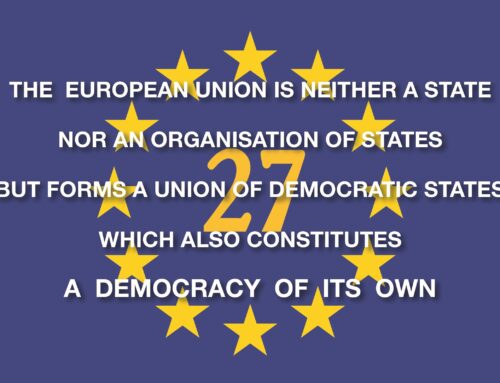This article was first published by the LSE British Politics and Policy Blog
In a recent blog, Arno van der Zwet and John Connolly make a persuasive case for ‘doing government better’ by embracing ‘public value management’ (PVM). Of course, PVM is not exactly new. I wrote about ‘public value’ as ‘the next big thing in public management’ back in 2009. More recently, an influential 2020 book classed PVM as one of the five key ‘paradigms’ of public governance – along with new public management, digital era governance, new public governance and a more traditional neo-Weberian view.
Zwet and Connolly argue, rightly in my view, that public value management should be fundamental to governance reform in Britain. Yet I also think that there is a huge problematic issue about implementing PVM in the UK with its current constitutional and governance arrangements. Zwet and Connolly do hint briefly about this aspect, when they mention ‘the UK and devolved levels’ of government at the end of their post. They also talk about future pandemic responses needing ‘greater emphasis on future local responses and decision-making, including perhaps more of a role [for] local leaders’. Yet I think that far more needs to be said here. When Zwet and Connolly speak about ‘listening to how political masters interpret public value’ the immediate question is: which ones? Following on from devolution and English local government changes the UK now has 412 ‘governments’ and an additional seven ‘metro-mayors’ running some combined local authority functions. So it is a key problem for PVM in the UK – who is the government? Who can take decisions about PVM? And what happens when there are conflicts between different tiers of our semi-federal government system?
What the COVID-19 pandemic has revealed all too vividly is the dysfunctional nature of government(s) in the British ‘Union’ state. At the top is the peculiar hybrid Westminster and Whitehall set-up, which combines being the government of the whole UK with being the government of England-only for many crucial public services.
Several Whitehall departments are now more England-only institutions, with pretty residual responsibilities for the rest of the UK. Big areas of policy crucial for securing ‘public value’ – like transport, policing, health, education and social care – are split into four geo-political domains. And as we have seen vividly during the pandemic there can be substantial differences between the four over urgent and important public health issues. Co-ordinated action across the competing ‘national’ governments has proved elusive and sometimes fractious. Another of the most striking features of the pandemic response was the lack of involvement from other tiers of government – devolved, local, metro-mayors – in Union-level decision-making that would in practice affect all parts of the UK and all levels of government.
In most fully federal liberal democratic systems there would be a legal-constitutional requirement for co-ordination between different governments, and mechanisms to implement that. Not in Britain. The Union government in Westminster can, and has, simply over-ridden the devolved governments in Edinburgh, Cardiff and Belfast. For example, Leighton Andrews shows that between 28 May and 18 September 2020, the Scottish and Welsh First Ministers had no direct contact with the British Prime Minister about the COVID-19 crisis.
These issues are generated by the clash of constitutional ideas and realities in the UK. The view of the current UK Government, and some experts, follows Dicey’s ideas about the absolute sovereignty of the single UK Parliament. Others maintain, and reality strongly suggests, that in practice the UK is now a muddled semi-federal polity with two levels of government in England (central and local) and three levels in Scotland, Wales, and Northern Ireland – Union, National, Local. (The Welsh government view is here.)
The problems here become even more acute at lower tiers of government and public services. Take attempts to create Integrated Care Systems (in England only) to produce health, public health, and social care ‘public value’. These can involve several different local governments as well as (English) national health and other local bodies. This is a prime example of what has come to be called ‘multi-level governance’ – where power is distributed not just vertically between tiers of government but also horizontally amongst a variety of agencies, quangos and other public authorities. Implementing PVM in this context is extremely problematic and the issue is not something that can simply be ignored.
It also raises important issues about the relationship between elected politicians and professional public service managers – something which is a central part of the PVM approach. Zwet and Connolly cite the Downing Street press briefings conducted during the pandemic as an illustration of a healthy relationship existing between politicians and experts. But these briefings also illustrated the multi-level governance problem. Sometimes the experts, standing alongside elected politicians, were Union-level government officials, and sometimes they were only English-level government officials (from Public Health England, for example). Nor were these differences explained. Conversely, whilst English- and Union-level government were often confused at the official level, they certainly were not politically. Elected leaders from devolved or local governments were always conspicuous by their absence from Downing Street briefings, and held their own regular briefings.
Zwet and Connolly correctly conclude that ‘the quality of government depends on the quality of future public sector leadership at multiple levels of governance’. Yet unless we can sort out more clearly what the relationships and powers of different levels of government are, and develop some mutual respect amongst leaders for the democratic mandates held at each level, implementing public value leadership will be very much more difficult, if not impossible.







Leave A Comment